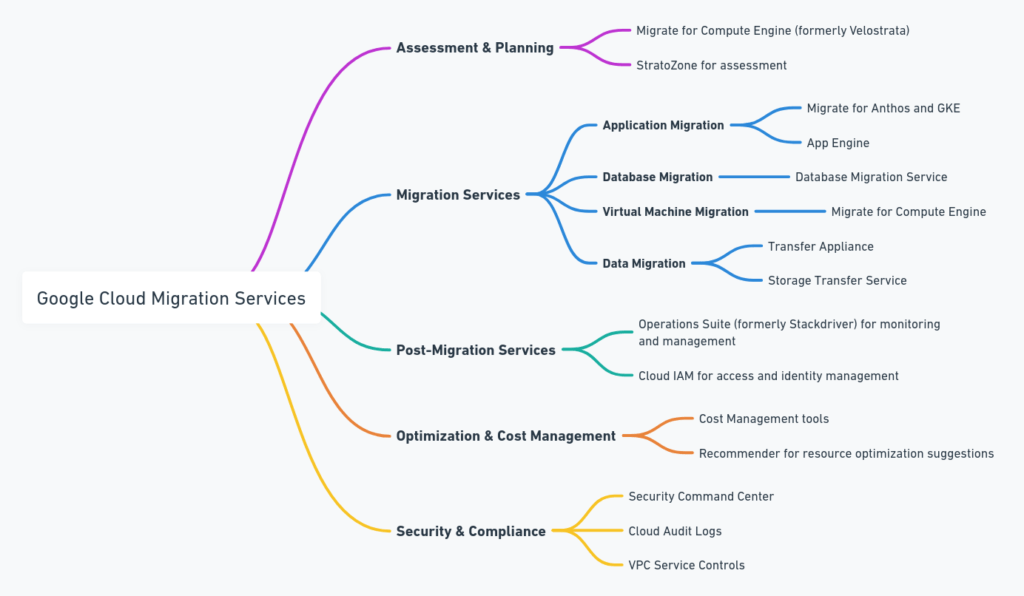Migrating your site to Google Cloud Platform (GCP) can significantly enhance its scalability, performance, and security. Google Cloud provides a suite of migration services designed to facilitate a smooth transition for websites, applications, and databases with minimal downtime. Here’s a concise overview of Google Cloud’s migration services and a step-by-step guide to ensure a successful migration.

Google Cloud Migration Services
Google Cloud Migration Center: A comprehensive resource offering tools, best practices, and guidance to plan and execute migrations. It’s the starting point for accessing Google Cloud’s migration services.
Migrate for Compute Engine (formerly Velostrata): Simplifies and accelerates the process of moving virtual machine workloads to Google Cloud. It allows for quick migration with minimal risk and downtime.
Database Migration Service: Offers an easy and secure way to migrate your databases to Google Cloud SQL from other environments. This service supports popular databases, ensuring a smooth transition with minimal downtime.
Transfer Appliance: A high-capacity storage server that you can use to securely transfer large volumes of data to Google Cloud without sending it over the Internet, ideal for massive datasets.
Storage Transfer Service: Facilitates moving data to Google Cloud Storage from other cloud storage providers or your physical data centers, automating the data transfer process.
Steps for a Successful Migration
- Assessment: Begin by evaluating your current infrastructure and determining what needs to be migrated. Google Cloud’s Migration Center can provide tools and resources to help assess your environment.
- Planning: Develop a comprehensive migration plan that includes choosing the right Google Cloud services for your needs, mapping out the migration process, and establishing a timeline.
- Migration: Utilize Google Cloud’s migration services, such as Migrate for Compute Engine for VM workloads and Database Migration Service for databases, to move your data and applications.
- Optimization: After migration, take the time to optimize your resources for cost and performance. Google Cloud offers tools like Cloud Monitoring and Cloud Billing Report to help manage and optimize your cloud resources.
Tips for a Smooth Migration
- Test: Conduct thorough testing in Google Cloud to ensure your applications and data work as expected before going live.
- Security: Implement Google Cloud’s security features to protect your migrated assets. Utilize Identity and Access Management (IAM) and Security Command Center to enhance your cloud security posture.
- Support: Consider leveraging Google Cloud’s support and professional services for guidance and assistance during your migration journey. Access to expert advice can significantly ease the migration process.